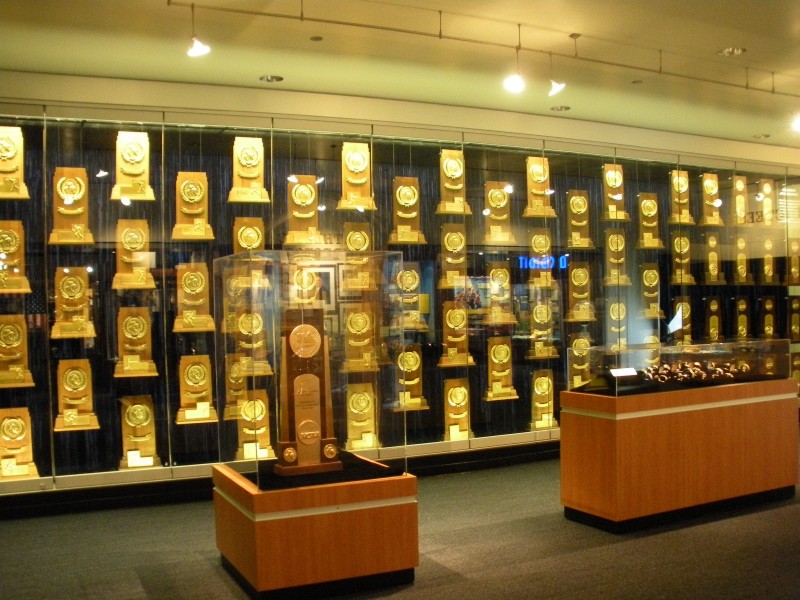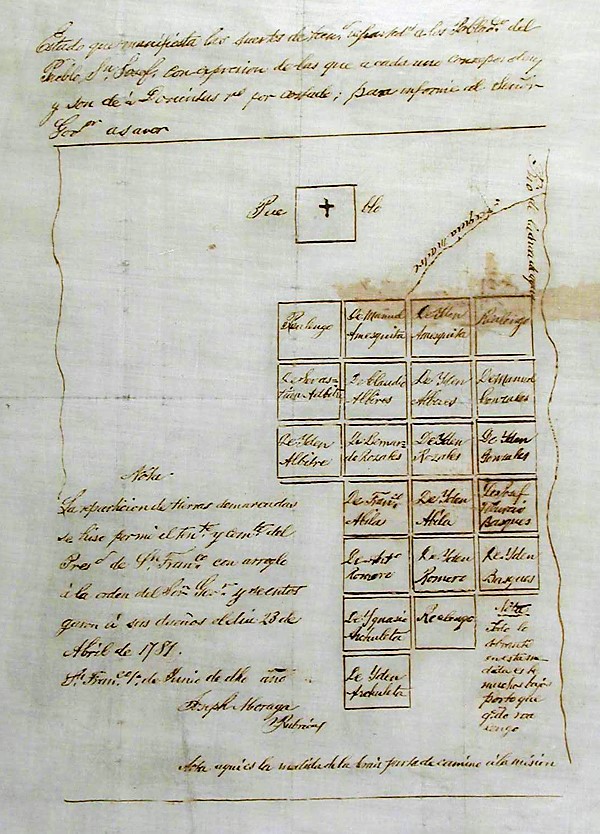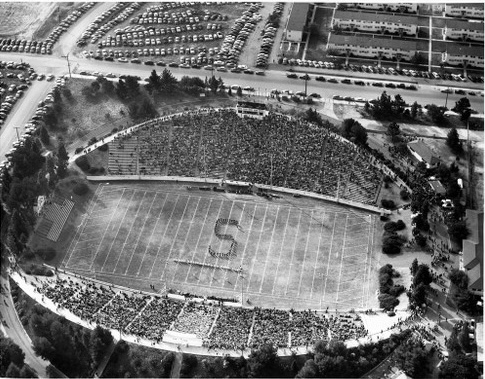|
1964 Washington State Cougars Football Team
The 1964 Washington State Cougars football team was an American football team that represented Washington State University in the Athletic Association of Western Universities (AAWU) during the 1964 NCAA University Division football season. In their first season under head coach Bert Clark, the Cougars compiled a 3–6–1 record (1–2–1 in AAWU, tie for sixth), and were outscored 208 to 165. The team's statistical leaders included Dave Petersen with 478 passing yards, Clancy Williams with 783 rushing yards, and Tom Kelley with 218 receiving yards. Williams was the ninth overall pick of the 1965 NFL draft, selected in the first round by the Los Angeles Rams. Hired in January, Clark was previously an assistant at rival Washington for seven seasons under head coach Jim Owens; both had played collegiately at Oklahoma under hall of fame head coach Bud Wilkinson. Clark's initial contract at WSU was for three years at $16,500 per year. ... [...More Info...] [...Related Items...] OR: [Wikipedia] [Google] [Baidu] |
Pac-12 Conference
The Pac-12 Conference is a collegiate List of NCAA conferences, athletic conference, that operates in the Western United States, participating in 24 sports at the NCAA Division I level. Its College football, football teams compete in the NCAA Division I Football Bowl Subdivision, Football Bowl Subdivision (FBS; formerly Division I-A), the highest level of college football in the nation. The conference's 12 members are located in the states of Arizona, California, Colorado, Oregon, Utah, and Washington (state), Washington. They include each state's flagship public university, four additional public universities, and two private research universities. The modern Pac-12 conference formed after the disbanding of the Pacific Coast Conference (PCC), whose principal members founded the Athletic Association of Western Universities (AAWU) in 1959. The conference previously went by the names Big Five, Big Six, Pacific-8, and Pacific-10. The Pac-12 moniker was adopted in 2011 with the add ... [...More Info...] [...Related Items...] OR: [Wikipedia] [Google] [Baidu] |
Spokane, WA
Spokane ( ) is the largest city and county seat of Spokane County, Washington, United States. It is in eastern Washington, along the Spokane River, adjacent to the Selkirk Mountains, and west of the Rocky Mountain foothills, south of the Canadian border, west of the Washington–Idaho border, and east of Seattle, along I-90. Spokane is the economic and cultural center of the Spokane metropolitan area, the Spokane–Coeur d'Alene combined statistical area, and the Inland Northwest. It is known as the birthplace of Father's Day, and locally by the nickname of "Lilac City". Officially, Spokane goes by the nickname of ''Hooptown USA'', due to Spokane annually hosting Spokane Hoopfest, the world's largest basketball tournament. The city and the wider Inland Northwest area are served by Spokane International Airport, west of Downtown Spokane. According to the 2010 census, Spokane had a population of 208,916, making it the second-largest city in Washington, and the 101st-largest ... [...More Info...] [...Related Items...] OR: [Wikipedia] [Google] [Baidu] |
Moscow, ID
Moscow ( ) is a city in North Central Idaho, United States. Located along the state border with Washington, it had a population of 25,435 at the 2020 census. The county seat and largest city of Latah County, Moscow is the home of the University of Idaho, the state's land-grant institution and primary research university. It is the principal city in the Moscow, Idaho Micropolitan Statistical Area, which includes all of Latah County. The city contains over 60% of the county's population, and while the university is Moscow's dominant employer, the city also serves as an agricultural and commercial hub for the Palouse region. Along with the rest of the Idaho Panhandle, Moscow is in the Pacific Time Zone. The elevation of its city center is above sea level. Two major highways serve the city, passing through the city center: US-95 (north-south) and ID-8 (east-west). The Pullman–Moscow Regional Airport, west, provides limited commercial air service. The local newspaper is the ... [...More Info...] [...Related Items...] OR: [Wikipedia] [Google] [Baidu] |
Neale Stadium
Neale Stadium was an outdoor athletic stadium in the northwest United States, located on the campus of the University of Idaho in Moscow, Idaho. Opened in 1937 for college football, it was used for over three decades, through the 1968 football season; the track team moved to the venue in the late 1940s. Its replacement, the enclosed Kibbie Dome, currently occupies the same site on the west end of campus; the outdoor track is adjacent to the west. History Neale Stadium was the home field for the Idaho Vandals of the Pacific Coast Conference (PCC) (and later the Big Sky) from 1937 through 1968. In addition to football, it was also used for track and field events after World War II. Approval for the stadium was granted by the board of regents in August and grading began shortly after. During construction the next spring, it was named for Mervin G. Neale, the university's president from 1930 to Its first game was the season-opener in 1937, a upset win over conference foe Oreg ... [...More Info...] [...Related Items...] OR: [Wikipedia] [Google] [Baidu] |
Battle of the Palouse
The Battle of the Palouse refers to an athletic rivalry in the northwest United States, between the Vandals of the University of Idaho and Cougars of Washington State University. The two land-grant universities are less than apart on the rural Palouse in the Inland Northwest; Idaho's campus in Moscow is nearly on the Idaho–Washington border, and Washington State's campus is directly west in Pullman, linked by Washington State Route 270 and the Bill Chipman Palouse Trail. The two schools' most prominent rivalry was in football, but in later years it has shifted to men's basketball. Football Series history The first game was played in November 1894 and resulted in a win for Washington State. The game in 1898 was not played because Idaho had an ineligible ringer from Lapwai, David McFarland, a recent All-American from Carlisle. The Vandals' first-ever forward pass was attempted against the Cougars in 1907: it was completed for a touchdown from a drop-kick formation in the ... [...More Info...] [...Related Items...] OR: [Wikipedia] [Google] [Baidu] |
1964 Idaho Vandals Football Team
The 1964 Idaho Vandals football team represented the University of Idaho in the 1964 NCAA University Division football season. The Vandals were led by third-year head coach Dee Andros and were an independent in the NCAA's University Division. Home games were played on campus at Neale Stadium in Moscow, with one home game in Boise at old Bronco Stadium at Boise Junior College. Season Led on the field by quarterback Mike Monahan and sophomore fullback Ray McDonald, the Vandals won 28–13 in the Battle of the Palouse with neighbor Washington State, the first win in a decade, and the last in Idaho. The Cougars were led by first-year head coach Bert Clark, a former teammate of Andros at Oklahoma. The Vandals split the final four games to finish at 4–6. Although Idaho was a charter member of the new Big Sky Conference, it did not participate in football until 1965, and was an independent from 1959 through 1964. They did not play any Big Sky teams in 1964 and all ten opponents w ... [...More Info...] [...Related Items...] OR: [Wikipedia] [Google] [Baidu] |
San Jose, CA
San Jose, officially San José (; ; ), is a major city in the U.S. state of California that is the cultural, financial, and political center of Silicon Valley and largest city in Northern California by both population and area. With a 2020 population of 1,013,240, it is the most populous city in both the Bay Area and the San Jose-San Francisco-Oakland Combined Statistical Area, which contain 7.7 million and 9.7 million people respectively, the third-most populous city in California (after Los Angeles and San Diego and ahead of San Francisco), and the tenth-most populous in the United States. Located in the center of the Santa Clara Valley on the southern shore of San Francisco Bay, San Jose covers an area of . San Jose is the county seat of Santa Clara County and the main component of the San Jose–Sunnyvale–Santa Clara Metropolitan Statistical Area, with an estimated population of around two million residents in 2018. San Jose is notable for its innovation, cultural d ... [...More Info...] [...Related Items...] OR: [Wikipedia] [Google] [Baidu] |
Spartan Stadium (San Jose, California)
CEFCU ('sef-kyü) Stadium, formerly known as Spartan Stadium, is an outdoor athletic stadium on the west coast of the United States, located in the Spartan Keyes neighborhood of central San Jose, California. Owned by San José State University, the venue is the longtime home of Spartan football; it also hosts the university's commencement ceremony on Memorial Day weekend, and occasional high school football games. Known as Spartan Stadium for over eight decades, it was renamed in 2016. CEFCU Stadium was the home of the San Jose Earthquakes (originally San Jose Clash) of Major League Soccer from the league's inception in 1996 through the 2005 season. Other tenants have included the original San Jose Earthquakes of the North American Soccer League from 1974 to 1984, the San Jose CyberRays of the Women's United Soccer Association from 2001 to 2003, and the San Francisco Dragons of Major League Lacrosse in 2008. Soccer Bowl '75 was also held at CEFCU. During the winter and ... [...More Info...] [...Related Items...] OR: [Wikipedia] [Google] [Baidu] |
1964 San Jose State Spartans Football Team
The 1964 San Jose State Spartans football team represented San Jose State CollegeSan Jose State University was known as San Jose State College from 1935 to 1971. during the 1964 NCAA University Division football season. San Jose State played as an Independent in 1964. The team was led by eighth-year head coach Bob Titchenal, and played home games at Spartan Stadium in San Jose, California. The Spartans finished the 1964 season with a record of four wins and six losses (4–6). Overall, the team outscored its opponents 151–145 for the season. Schedule Team players in the NFL The following San Jose State players were selected in the 1965 NFL Draft. Notes References San Jose State San Jose State Spartans football seasons San Jose State Spartans football The San Jose State Spartans football team represents San José State University in NCAA Division I FBS college football as a member of the Mountain West Conference. History Early history (1893–1970) San J ... [...More Info...] [...Related Items...] OR: [Wikipedia] [Google] [Baidu] |
1964 Pacific Tigers Football Team
The 1964 Pacific Tigers football team represented the University of the Pacific during the 1964 NCAA College Division football season. Pacific competed as an independent in 1964, and played home games in Pacific Memorial Stadium Amos Alonzo Stagg Memorial Stadium was known as Pacific Memorial Stadium from its opening in 1950 through 1987. in Stockton, California. In their first season under head coach Don Campora, the Tigers finished with a record of one win and nine losses (1–9). They were outscored 68 to 304, shut out four times, and failed to score more than a touchdown in seven of their ten games. Schedule Notes References External linksGame program: Pacific at Washington State– October 10, 1964 {{Pacific Tigers football navbox Pacific Pacific Tigers football seasons Pacific Tigers football The Pacific Tigers football team represented the University of the Pacific (United States), University of the Pacific in NCAA Division I-A (now FBS) c ... [...More Info...] [...Related Items...] OR: [Wikipedia] [Google] [Baidu] |
Tucson, AZ
, "(at the) base of the black ill , nicknames = "The Old Pueblo", "Optics Valley", "America's biggest small town" , image_map = , mapsize = 260px , map_caption = Interactive map outlining Tucson , image_map1 = File:Pima County Incorporated and Unincorporated areas Tucson highlighted.svg , mapsize1 = 250px , map_caption1 = Location within Pima County , pushpin_label = Tucson , pushpin_map = USA Arizona#USA , pushpin_map_caption = Location within Arizona##Location within the United States , subdivision_type = Country , subdivision_type1 = State , subdivision_type2 = County , subdivision_name = United States , subdivision_name1 = Arizona , subdivision_name2 = Pima , established_title = Founded , established_date = August 20, 1775 , established_title1 = Incorporated , e ... [...More Info...] [...Related Items...] OR: [Wikipedia] [Google] [Baidu] |
Arizona Stadium
Arizona Stadium is an outdoor college football stadium in the southwestern United States, located on the campus of the University of Arizona in Tucson, Arizona. It is the home field of the Arizona Wildcats of the Pac-12 Conference. Originally constructed in 1929 to hold 7,000 spectators, the stadium's seating capacity has been expanded numerous times since. As of 2022, the stadium has a total capacity of 50,800. The facility also includes the offices of the Wildcat football program, as well as some non-athletic academic offices, including the Steward Observatory Mirror Lab. History Located in central Tucson, Arizona Stadium has been home to University of Arizona Wildcats football since 1929. Initially, stadium capacity was 7,000, with the only seating located on the stadium's west side. The first game was a 35–0 shutout of Caltech on October 12. Capacity was increased to 10,000 in 1938 when seats were constructed on the stadium's east side. Four thousand seats were a ... [...More Info...] [...Related Items...] OR: [Wikipedia] [Google] [Baidu] |





